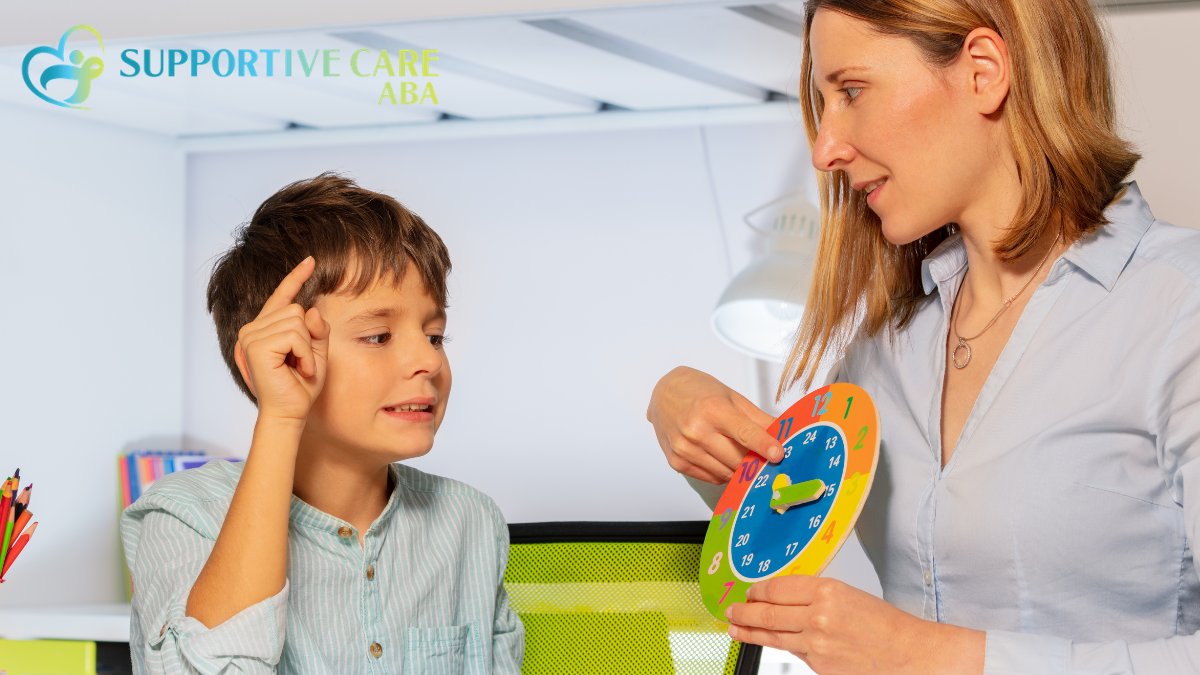Visual Timer for Autism: 10 Ways to Use It at Home
Visual timer for autism use at home can ease transitions—explore 10 practical ways to incorporate it into your child’s daily routines for smoother structure.

Visual Timer for Autism: 10 Ways to Use It at Home
Key Points:
- A visual timer for autism can make daily routines more manageable and less stressful.
- Using visual timers at home can help children transition between activities with less resistance.
- Timers can support independence, emotional regulation, and cooperation through ABA-informed strategies.
For children with autism, especially those who struggle with transitions, time perception and focus can be even more complicated. That’s where a visual timer for autism becomes a powerful tool.
Unlike standard timers, a visual timer uses color, motion, or graphics to show how much time is left, helping children understand and anticipate transitions or task limits. It gives time a “visible shape,” something abstract that becomes concrete.
But owning one isn’t enough—it's how you use it that matters. Let’s explore 10 practical, research-informed ways to use a visual timer at home to make everyday life smoother for both children and parents.
Understanding Visual Timers: Why They Work
Before diving into real-life uses, it’s helpful to understand why visual timers are so effective—especially for kids with autism. Many autistic children process time differently. Abstract terms like “five more minutes” don’t carry much weight unless tied to something they can see and process.
A visual timer bridges this gap by making time predictable. Whether the timer shows a shrinking red disk, a pie chart countdown, or LED bars disappearing, the message is clear: something’s ending or starting soon. This predictability reduces anxiety, builds routine, and fosters trust.
Applied Behavior Analysis (ABA) often uses visual supports like these to break down complex tasks, support transitions, and help kids self-regulate. It’s not just about "keeping time"—it’s about improving participation and independence.
Smooth Out Morning Routines
Getting out the door in the morning can feel like a battleground—dressing, brushing teeth, eating breakfast, packing bags. Visual timers can structure each part of the routine.
Here’s how to use it effectively:
- Assign time slots to each task. Set the timer for brushing teeth (e.g., 2 minutes), then again for dressing (e.g., 5 minutes).
- Avoid overloading. Focus on one task at a time and reset the timer each step.
- Let the timer be the "bad guy.” Instead of repeating reminders, you can say, “Let’s beat the red circle,” shifting the emotional weight away from you.
By creating a rhythm that’s reinforced by a visual cue, your child starts to associate time with action—and action with accomplishment.
Make Bath Time Predictable
For some children, bath time is fun. For others, it’s a full-on sensory overload. Using a visual timer gives a clear endpoint.
Introduce it with a calm, positive tone: “You’ll play in the tub until the red is gone.”
Start with short periods and gradually increase. The timer helps reduce uncertainty and offers a consistent cue for when water play ends, minimizing surprise or resistance.
Increase Focus During Learning or Play
Autistic children may hyper-focus on preferred activities or struggle to sit through tasks they dislike. A visual timer adds gentle structure to both scenarios.
You can use it to:
- Set time limits for preferred activities, like screen time.
- Encourage focus during non-preferred activities, like writing or reading.
- Let your child know when breaks are coming, reducing the pressure of working indefinitely.
The visual cue serves as a quiet reminder without nagging. It promotes self-monitoring and helps balance work and play.
Ease Transitions Between Activities
Transitions can be one of the toughest parts of the day for autistic kids. Moving from one activity to another—especially from something fun to something structured—can trigger resistance or meltdowns.
Use a visual timer in these situations:
- 5 minutes before lunch ends: Set the timer as a countdown to cleanup.
- 10 minutes before a preferred activity ends: Give a visual cue to signal that change is coming.
The goal is to reduce the element of surprise. Many kids feel more in control when they see that something is ending and that it’s not abrupt or arbitrary.

Build Consistency in Bedtime Routines
Bedtime often feels like a power struggle. The combination of fatigue, overstimulation, and unpredictability can make this time of day extra challenging.
Use a visual timer to reinforce the sequence:
- 5 minutes of teeth brushing
- 10 minutes of storytime
- 5 minutes of quiet music
Each segment of the routine can be timed visually so the child knows what’s next and how long it lasts. When used consistently, it can reduce bedtime resistance and build a stronger sleep habit.
Manage Screen Time Without a Fight
Screen time is a sensitive topic, and it’s easy for minutes to become hours. Instead of sudden cutoffs that lead to tantrums, use a visual timer to set expectations.
Here’s how to do it:
- Set the visual timer for an agreed-upon screen time (e.g., 20 minutes).
- Let your child see the timer from the beginning.
- Give warnings as the timer winds down (“When the blue light disappears, it's time to turn it off”).
When the timer is visible and consistent, transitions away from screens feel less abrupt—and more fair.
Encourage Independent Task Completion
One of the goals of ABA therapy is to build independence. A visual timer supports this by teaching children to manage their own time.
Here are examples where timers promote independence:
- Cleaning up toys in 5 minutes
- Wiping a table or folding clothes
- Sitting independently during table tasks
You can pair the timer with a visual checklist or token board for added support. The goal isn’t perfection—it’s participation.

Teach Emotional Regulation
Emotions don’t always have an off switch, especially for children with autism. When a child is overwhelmed, angry, or overstimulated, a visual timer can support de-escalation.
You can create a “calm-down corner” with a visual timer and say: “Let’s breathe here for 3 minutes until the red is gone.”
By giving a child a visual cue for recovery time, you shift the process from discipline to regulation. This aligns with ABA strategies that teach coping skills through consistency and clarity.
Balance Shared Activities with Siblings
If you have more than one child, timers can become neutral referees. Whether it’s taking turns with a toy or choosing a TV show, setting a timer helps avoid power struggles.
Try these approaches:
- Alternate turns every 10 minutes with a visible timer.
- Show both children the timer so everyone knows it’s fair.
- Praise turn-taking to reinforce positive behavior.
Sibling rivalry is normal, but timers can reduce the tension and teach sharing with structure—not yelling.
Use It with Token Systems or Reinforcement Schedules
If you're already using token boards or ABA-based reinforcement strategies, integrating a visual timer makes the system even stronger.
Here’s how to combine them:
- “Work for 5 minutes” → Timer counts down.
- When the timer ends, the child earns a token or break.
- Over time, gradually extend the work period.
Visual timers give structure to expectations and make rewards more predictable. They also help parents fade support gradually, teaching children to persist longer over time.
When ABA therapy is part of your child’s routine, tools like visual timers can be seamlessly integrated to reinforce skills like self-management, flexibility, and task persistence. That’s where providers like Supportive Care ABA bring expertise in tailoring these methods to each child’s needs.
Why This Matters: ABA Therapy and the Power of Visual Supports
Routines, transitions, and emotional regulation are daily challenges in many homes with autistic children. While visual timers are a simple tool, they’re incredibly powerful when used strategically and consistently.
In ABA therapy, visual supports like these aren't just helpful—they’re essential. They bridge gaps in communication, offer structure, and reinforce positive behaviors. A timer becomes more than a countdown; it becomes a trusted signal that brings clarity, not conflict.
Supportive Care ABA provides individualized ABA therapy that empowers families and supports children in learning these daily living skills. Our therapists understand how tools like a visual timer for autism can be adapted to fit real-life routines—right in your home.
If you're seeking ABA therapy in Oklahoma, Virginia, Indiana, North Carolina, or Georgia, reach out to us. Let’s build structure, reduce stress, and help your child thrive—one timer tick at a time.








.jpg)
.jpg)


%20(1).jpg)
.jpg)
